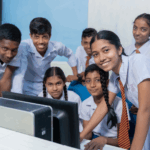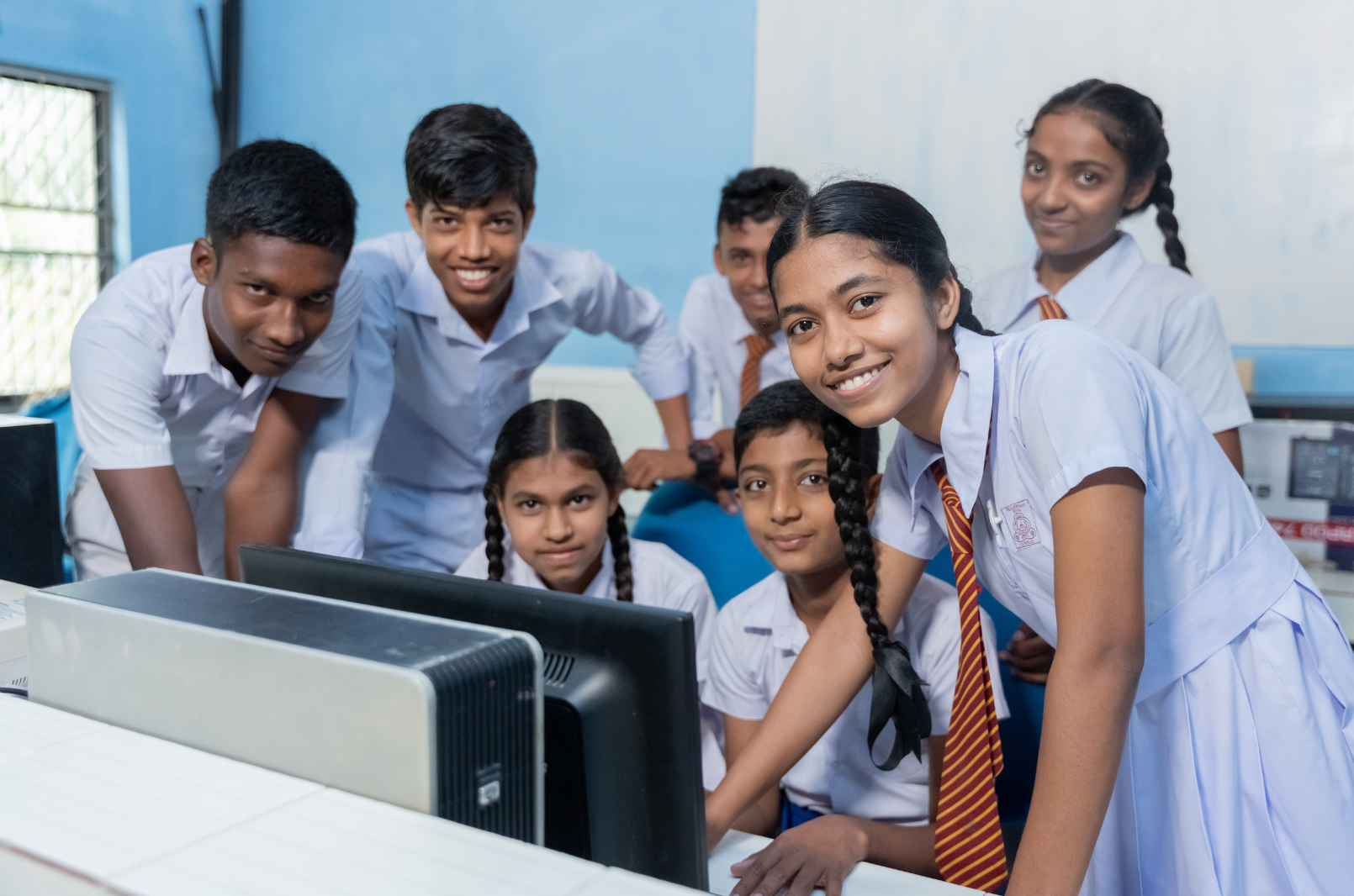In Ampara, the largest district in Sri Lanka’s Eastern Province, education is taking a digital leap forward. With vast distances stretching over 150 kilometers from one end to another, schools and students have long faced challenges in accessing quality education. Yet, change is on the horizon, driven by innovative efforts to bring connectivity to classrooms and create new opportunities for young learners.
At the forefront of this transformation is Mrs. S. R. Hasanthi, the Zonal Director of Education in Ampara. Recognizing the power of digital learning, she championed the Connected Schools Model, an initiative that links schools with fully equipped ICT labs to those with fewer resources. This initiative ensures that students, whether in town centers or remote villages, have access to the same learning materials through virtual classrooms.

One such hub school, Gamini Maha Vidyalaya, supports 20 interconnected schools, creating a ripple effect of digital learning. “Thanks to connectivity through these ICT labs, students are developing digital skills and expanding their knowledge beyond the classroom,” says Mrs. Hasanthi. Although connectivity challenges persist, the enthusiasm among students and teachers remains strong.
Giga, a partnership between the ITU (International Telecommunication Union) and UNICEF, is working to accelerate these gains in Sri Lanka, one of 39 countries where it is currently engaged. Beginning in 2023, Giga is geolocating the country’s schools as a starting point in its mission to help governments connect their schools to the internet.
Another tool at work in Sri Lanka is Giga Meter, a desktop app that monitors the quality of a school’s internet connection by performing daily automated tests. The app collates and syncs the results directly into Giga Maps – a global live and open map of schools and their connectivity status. By leveraging data from Giga Meter, governments and school administrators can make informed decisions that enhance school internet services, ultimately improving students’ digital learning experiences.
Currently, over 500 schools are part of Giga Maps, but the journey is just beginning, with 10,000 schools across the country. Of those, 30% have internet access, and many struggle to maintain connectivity due to financial constraints. The impact of connectivity is made vivid by individual examples. For Harshani, a 10th-grade student at Bakmitiyawa Vidyalaya, the internet is more than just a tool—it’s a gateway to her future. Aspiring to become a lawyer, she knows that access to information is key. However, her school, located in a rural part of Ampara, lacks reliable internet and up-to-date computers.
“Before our school had connectivity, I climbed trees and even went onto sheds to get stronger signals and access information,” she recalls. “Now, with more schools getting connected, I feel hopeful that students like me can have the same opportunities as those in cities.”

Her mother, Mrs. S. S. Nilanthi, proudly speaks of Harshani’s passion for debating. “She competes against students from cities who can research online with ease. She wins, proving her talent and determination. With the right resources, she could refine her skills even further—learning to construct stronger arguments, analyze cases deeply, and prepare herself for the day she will stand in court, advocating for justice with confidence and knowledge.”
Beyond individual success stories, digital connectivity is fostering collaboration across Ampara’s schools where a school with an ICT lab is linking to schools with fewer resources. Ms. M.D.T. Chandrasiri, a key member of Mrs. Hasanthi’s team, highlights the impact of the Sip Arana web app, which provides free worksheets designed by Ampara’s teachers. Already, 200 students across Sri Lanka are using this tool, showing how digital resources can bridge learning gaps.
However, as Mrs. Hasanthi emphasizes, providing devices alone is not enough. Students need safe learning spaces, trained teachers, and stable internet connections to truly benefit from digital education.

As Mrs. Hasanthi puts it, “Every school deserves access to fast, reliable internet. Every child deserves the chance to learn, to grow, to dream. Connected schools create a connected future.”
https://www.youtube.com/watch?v=S07tlbdbFmk

